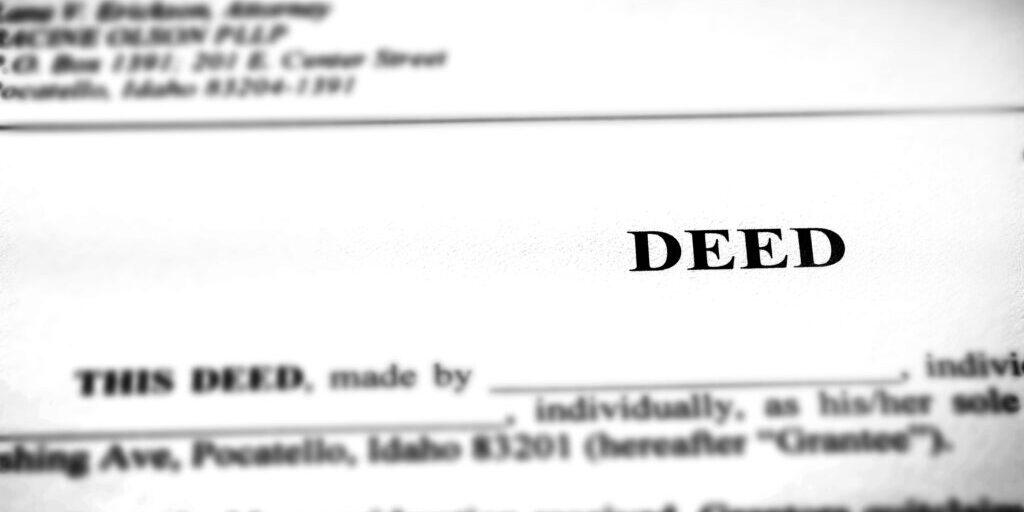Understanding Quitclaim Deeds

Understanding Quitclaim Deeds: A Comprehensive Guide to Property Transfers
Introduction
In the realm of real estate transactions, one legal instrument stands out for its simplicity and versatility—the quitclaim deed. Often abbreviated as QCD, a quitclaim deed is a legal document used to transfer interest in real property from one party to another. While it may not be as commonly employed as warranty deeds, quitclaim deeds serve a unique purpose and offer distinct advantages in certain situations. In this comprehensive guide, we will delve into the intricacies of quitclaim deeds, exploring their definition, key components, typical use cases, advantages, limitations, and the process involved in executing one.
What is a Quitclaim Deed?
At its core, a quitclaim deed is a legal document used to transfer ownership interest in a property from one party to another. Unlike warranty deeds, which provide certain guarantees about the property’s title and the absence of undisclosed liens, quitclaim deeds make no such promises. Instead, they convey whatever interest the grantor (the person transferring the property) has in the property, without any warranty of title.
Key Components of a Quitclaim Deed
Understanding the key components of a quitclaim deed is crucial for both parties involved in the transaction. The document typically includes the following elements:
- Parties Involved:
- Grantor: The individual or entity transferring the property.
- Grantee: The individual or entity receiving the property.
- Property Description:
- A detailed description of the property being transferred, including its legal description and physical address.
- Consideration:
- The consideration, or value exchanged for the property, may be mentioned in the deed even if no money is involved.
- Notary Acknowledgment:
- The deed must be signed in the presence of a notary public, who acknowledges the grantor’s signature.
- Execution Date:
- The date on which the quitclaim deed is signed.
Typical Use Cases for Quitclaim Deeds
Quitclaim deeds are versatile instruments used in various real estate scenarios. Some common situations in which quitclaim deeds are employed include:
- Transfers Between Family Members:
- Quitclaim deeds are often used to transfer property between family members, such as parents gifting a property to their children or between siblings.
- Divorce Proceedings:
- In divorce settlements, one spouse may use a quitclaim deed to relinquish their interest in a property to the other spouse.
- Clearing Title Issues:
- Quitclaim deeds are sometimes utilized to clear up clouded titles or to resolve disputes over property ownership.
- Adding or Removing a Co-owner:
- Co-owners can use quitclaim deeds to add or remove individuals from the property title.
- Transfers to Living Trusts:
- Individuals may transfer property into their living trusts using quitclaim deeds as part of estate planning.
Advantages of Quitclaim Deeds
While quitclaim deeds may not provide the same level of protection as warranty deeds, they offer several advantages in specific situations:
- Simplicity and Speed:
- Quitclaim deeds are relatively simple documents, making them quick and easy to prepare. This can be advantageous in time-sensitive transactions.
- Family Transfers:
- In family transactions, where trust and understanding exist among the parties, quitclaim deeds can facilitate the transfer of property without the need for extensive legal processes.
- Flexibility:
- Quitclaim deeds can be useful in situations where the exact nature of the property interest is unclear or when parties are comfortable with the level of risk involved.
- Cost-Effective:
- The simplicity of quitclaim deeds often results in lower legal fees compared to more complex transactions involving warranty deeds.
Limitations and Risks
While quitclaim deeds have their advantages, it’s essential to be aware of their limitations and potential risks:
- No Title Guarantees:
- Unlike warranty deeds, quitclaim deeds do not guarantee the grantor’s ownership interest or provide assurances about the property’s title.
- Limited Protection for Grantees:
- Grantees receive no assurances regarding the property’s history, potential liens, or other encumbrances.
- Potential for Fraud:
- Since quitclaim deeds lack the safeguards of warranty deeds, there is a higher risk of fraudulent conveyances.
- Not Suitable for All Transactions:
- Quitclaim deeds may not be suitable for transactions where a clear and marketable title is crucial, such as when obtaining financing or selling the property to a third party.
Executing a QuitClaim Deed: Step-by-Step Process
- Consultation with Legal Professionals:
- Before initiating the process, it is advisable for both parties involved to seek legal advice to understand the implications and ensure the deed is drafted correctly.
- Drafting the Deed:
- The quitclaim deed should accurately reflect the property description, the names of the grantor and grantee, and other essential details. Some jurisdictions may have specific requirements for formatting and content.
- Execution and Notarization:
- The grantor must sign the deed in the presence of a notary public, who will then acknowledge the signature.
- Recording the Deed:
- The signed and notarized quitclaim deed must be recorded with the county or local land records office. This step is crucial to provide notice to the public and establish the effective date of the transfer.
- Delivery to the Grantee:
- Once recorded, the original executed deed should be delivered to the grantee, providing them with proof of ownership.
Conclusion
In conclusion, quitclaim deeds play a unique role in real estate transactions, offering a straightforward and efficient means of transferring property interests. While they may lack the protective features of warranty deeds, quitclaim deeds are invaluable in specific scenarios, especially when used among family members or parties with a high level of trust. Understanding the advantages, limitations, and the step-by-step process of executing a quitclaim deed is essential for those considering this instrument in their real estate dealings. As with any legal transaction, seeking professional advice is crucial to ensure that the process is executed correctly and that all parties involved are fully aware of the implications of the transfer.
